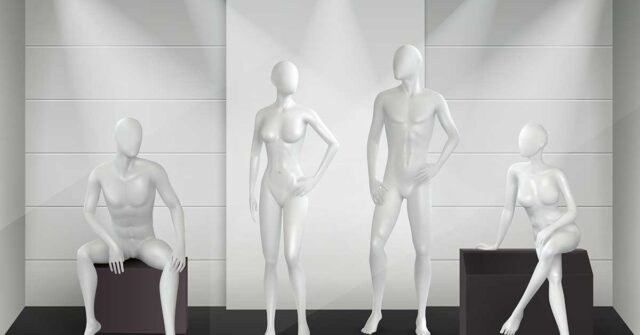The Role of Mannequins in Retail
The Psychology Behind Mannequin Placement
Strategic mannequin placement taps into various psychological principles that influence shopping behavior. Here are some key concepts:
1. Visual Merchandising
Visual merchandising involves the use of floor plans, color, lighting, displays, and technology to attract customers and enhance their shopping experience. Mannequins play a crucial role in this by creating focal points that draw the eye and highlight key items. Properly placed mannequins can lead customers through the store, increasing the chances of additional purchases.
2. The Power of Eye Level
The adage “eye level is buy level” holds true in mannequin placement. Items displayed at eye level are more likely to catch the customer’s attention. By positioning mannequins at eye level with compelling outfits, retailers can highlight specific products, encouraging customers to take a closer look.
3. Storytelling Through Displays
Humans are naturally drawn to stories, and mannequins can be used to tell a visual story. Grouping mannequins in a way that suggests a scene—like a family at a picnic or friends at a party—can create a narrative that resonates with customers. This approach makes the shopping experience more engaging and memorable.
Techniques for Effective Mannequin Placement
To maximize the impact of mannequins, retailers can employ several strategies:
1. Creating a Window Display
The store window is the first thing a potential customer sees. A well-designed window display with mannequins can entice passersby to enter the store. Use bold colors, seasonal themes, and striking poses to create a dynamic display that grabs attention.
2. Highlighting Key Zones
Identify high-traffic areas within the store, such as entrances, aisles, and checkout lines. Placing mannequins in these zones ensures that they are seen by the maximum number of customers. These mannequins should feature the latest trends or bestsellers to pique interest.
3. Grouping and Spacing
Mannequins should be grouped and spaced thoughtfully to avoid clutter and ensure each mannequin stands out. Clusters of mannequins can create a sense of a social scene, while individual mannequins can highlight solo items. Adequate spacing ensures that customers can view the outfits from all angles.
4. Seasonal and Thematic Displays
Change mannequin outfits regularly to reflect seasonal trends and promotions. A fresh display keeps the store looking updated and encourages repeat visits. Thematic displays, such as holiday or back-to-school themes, can also attract specific customer groups and boost relevant sales.

Technology and Mannequin Placement
Advancements in technology have opened new avenues for enhancing mannequin displays. Here are a few examples:
1. Interactive Display
Some stores now use interactive mannequins equipped with sensors and digital screens. These mannequins can engage with customers by providing additional information about the products they are wearing, such as available sizes, colors, and prices. This interaction can enrich the shopping experience and drive sales.
2. Virtual Mannequins
Virtual mannequins, displayed on digital screens, can change outfits at the touch of a button, providing a dynamic and versatile display option. They can also be programmed to move, creating a more engaging and lifelike presentation.
3. Augmented Reality (AR)
AR technology allows customers to use their smartphones to see how products displayed on mannequins would look on themselves. This personalized experience can increase customer engagement and lead to higher conversion rates.
Measuring the Success of Mannequin Placement
Retailers can gauge the effectiveness of their mannequin placement through various metrics:
1. Sales Data
Track the sales of items displayed on mannequins compared to those that are not. A significant increase in sales for displayed items indicates successful mannequin placement.
2. Customer Foot Traffic
Use foot traffic analytics to measure how customers move through the store. Heat maps can show which areas attract the most attention, helping retailers optimize mannequin placement.
3. Customer Feedback
Solicit feedback from customers about the store layout and displays. This qualitative data can provide insights into how mannequins impact the shopping experience and highlight areas for improvement.
Conclusion
Strategic mannequin placement is both an art and a science, combining elements of psychology, design, and technology to create an engaging shopping environment. By understanding the principles behind effective mannequin placement, retailers can enhance visual merchandising, attract more customers, and ultimately boost sales. As technology continues to evolve, the potential for innovative and interactive mannequin displays offers exciting opportunities for the future of retail. Embracing these strategies can help retailers stay competitive and create a shopping experience that delights customers and drives business success.
















































